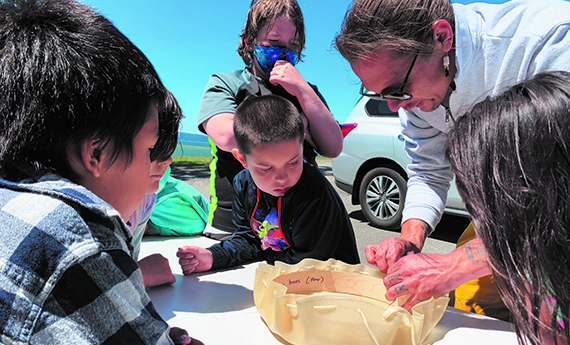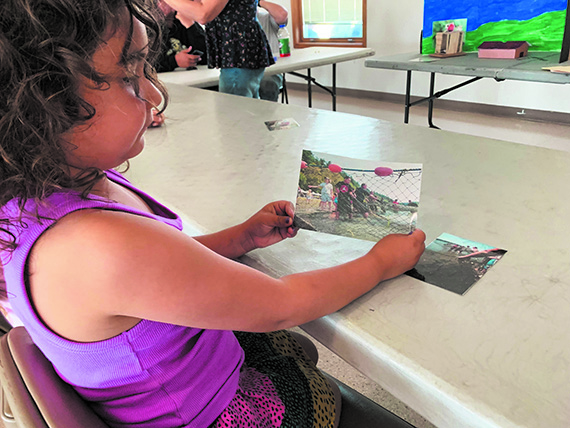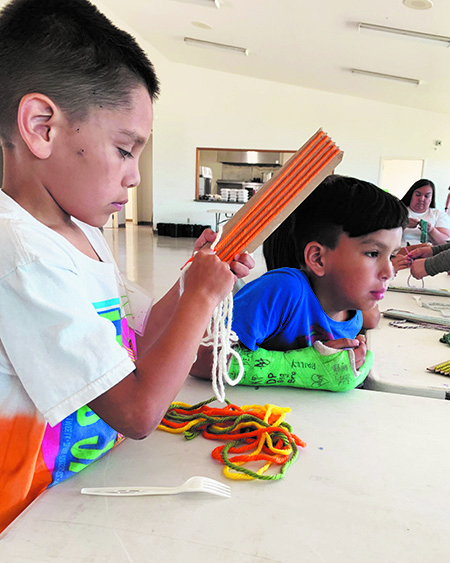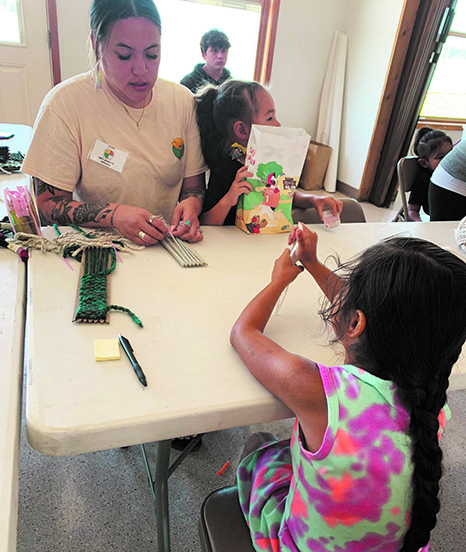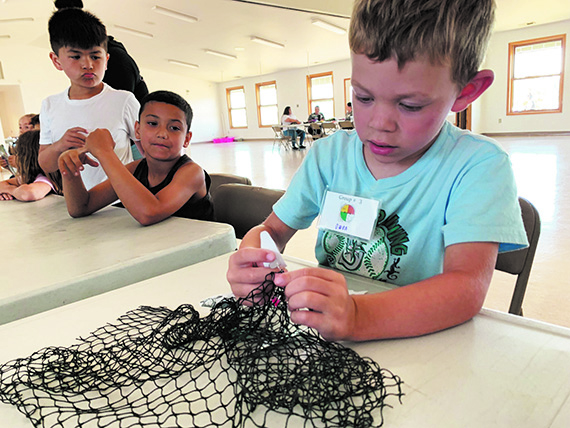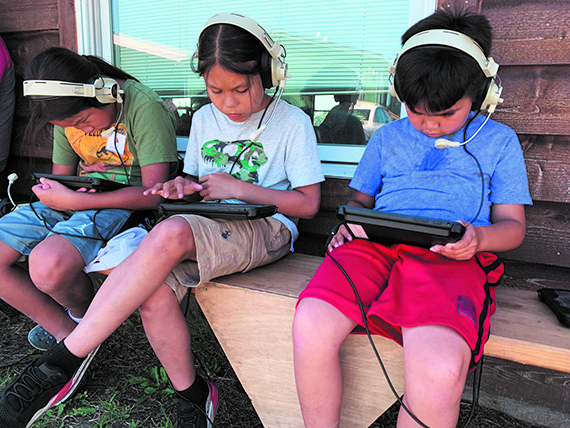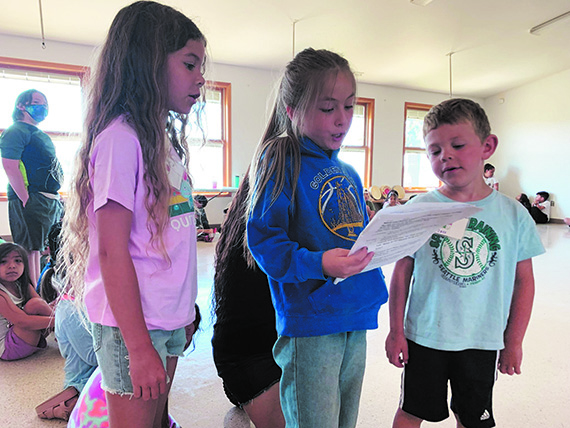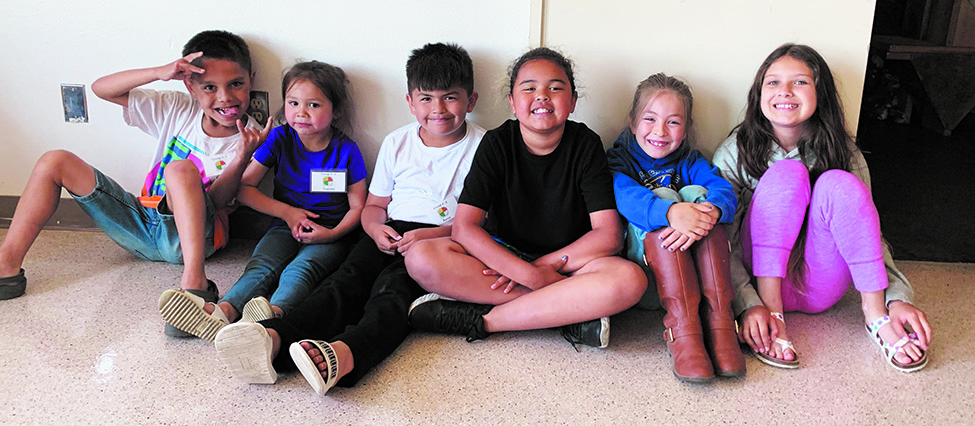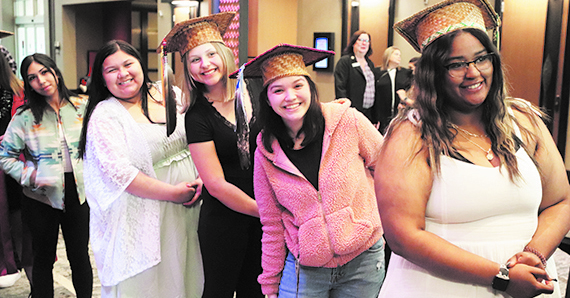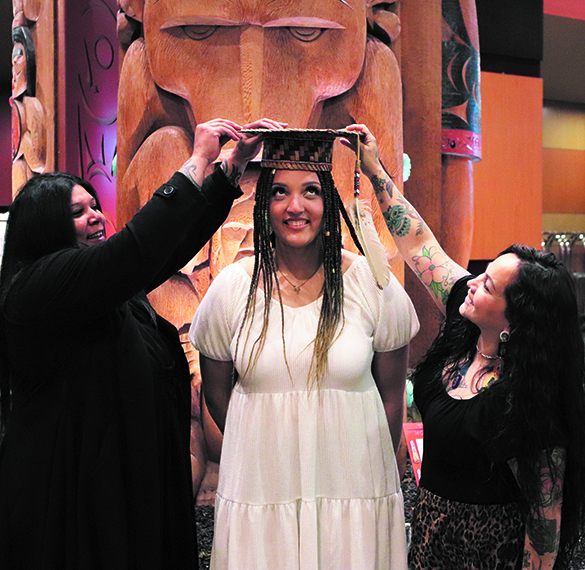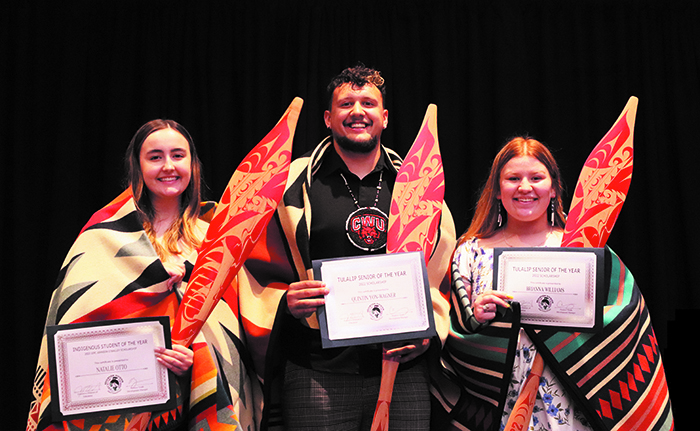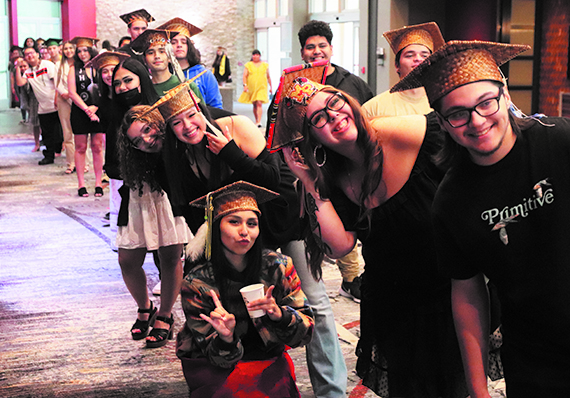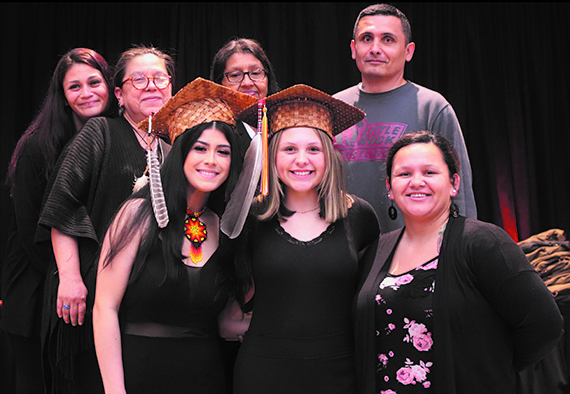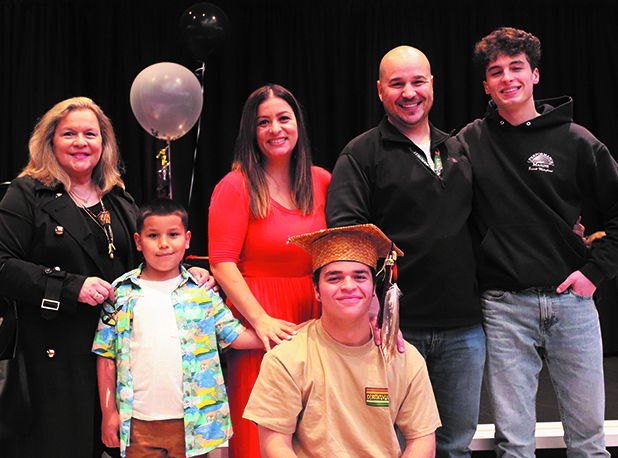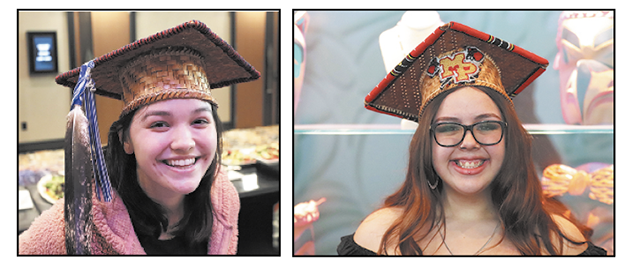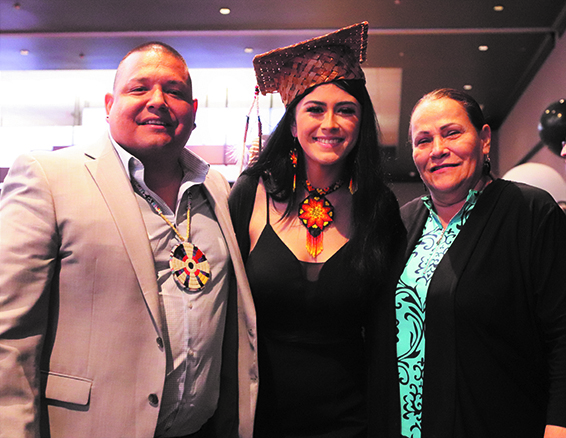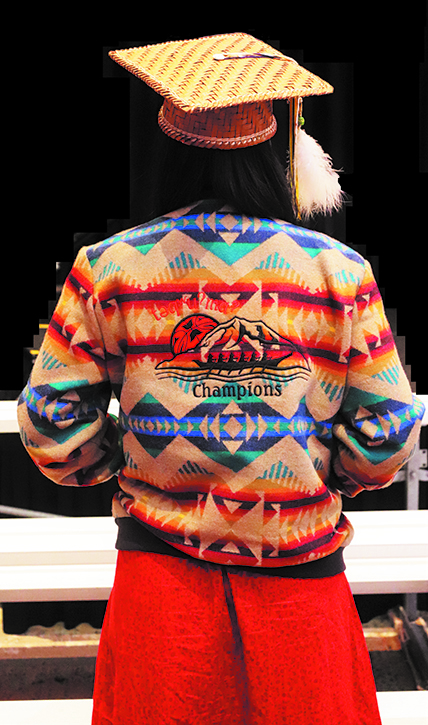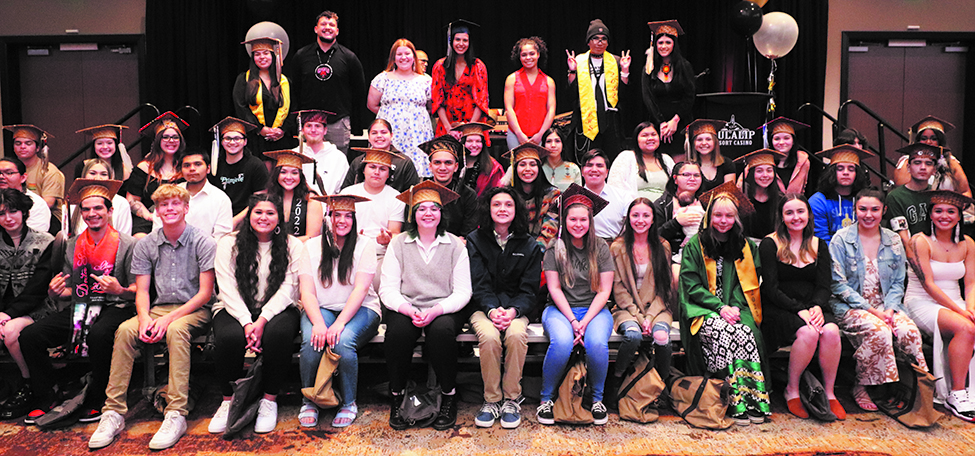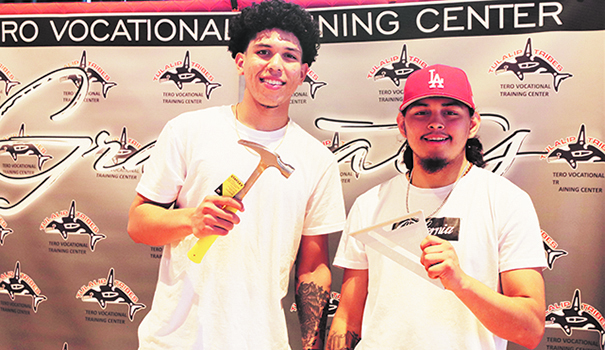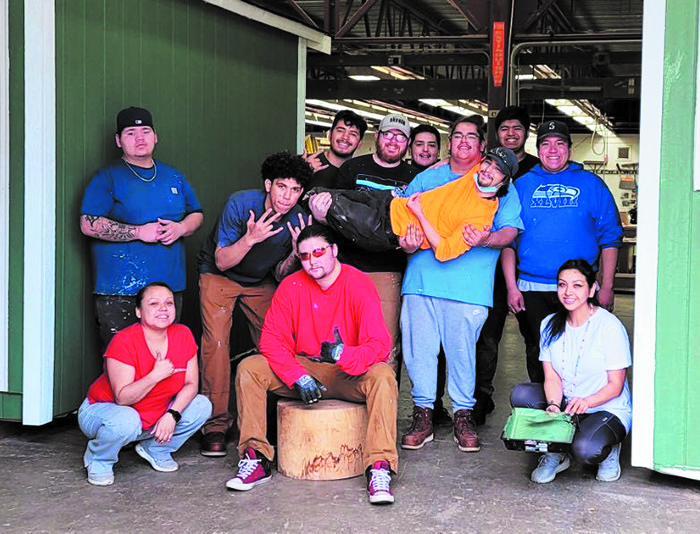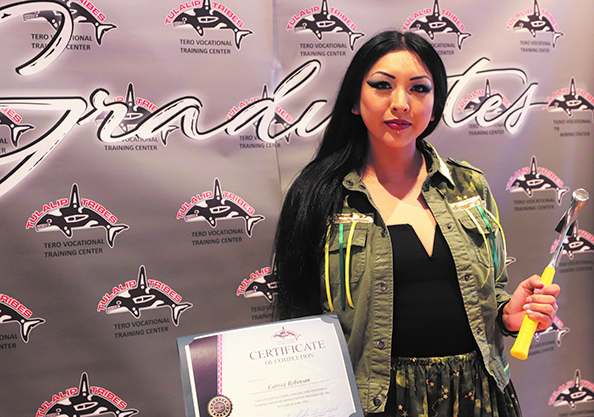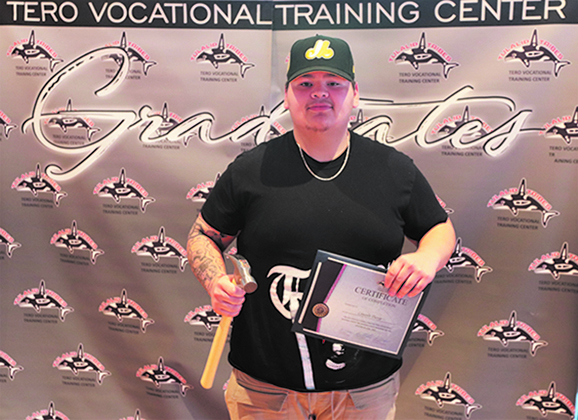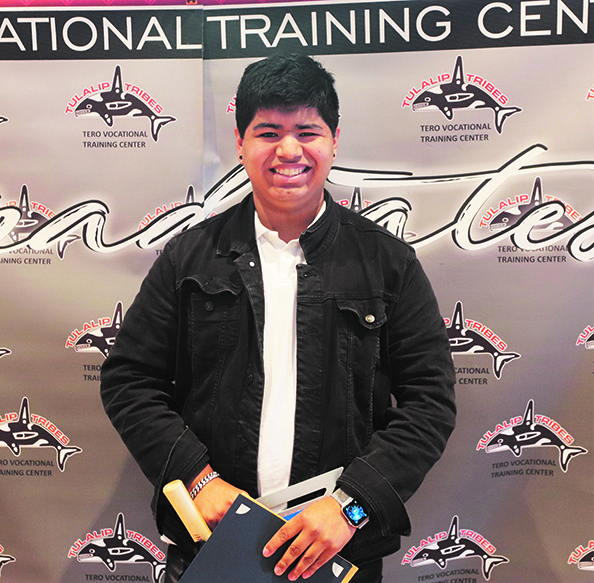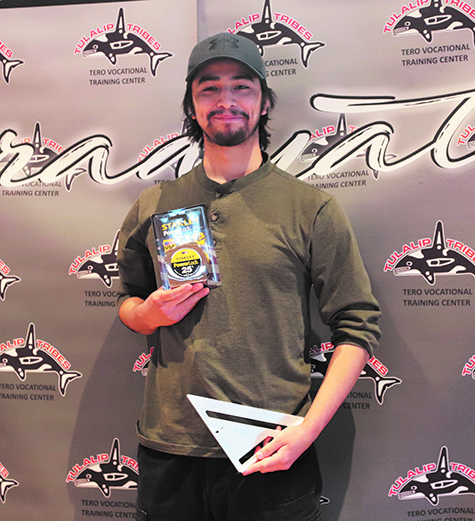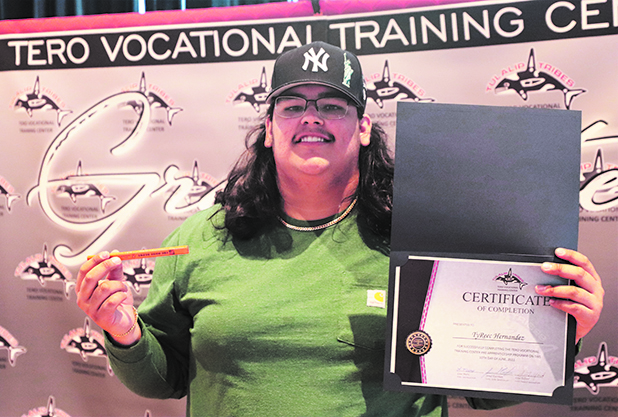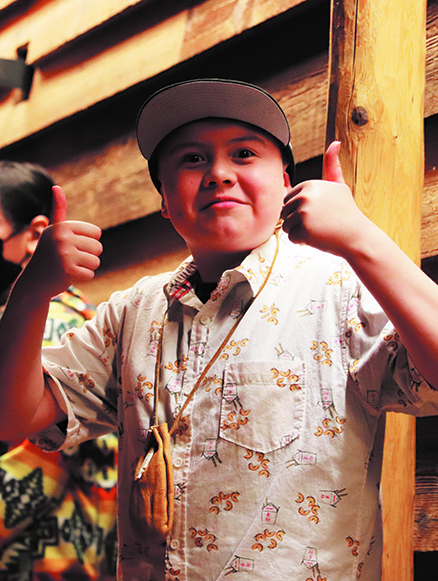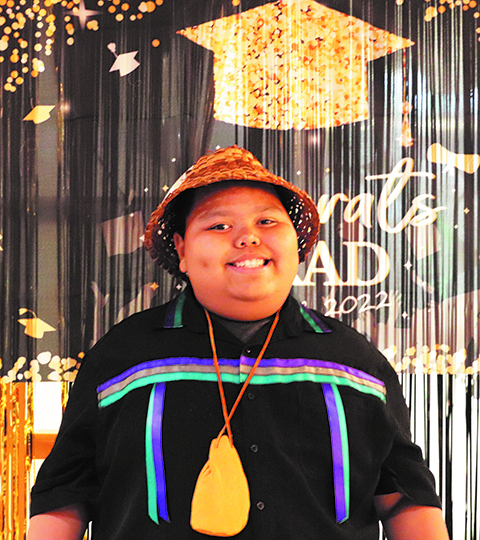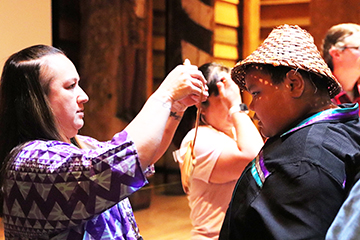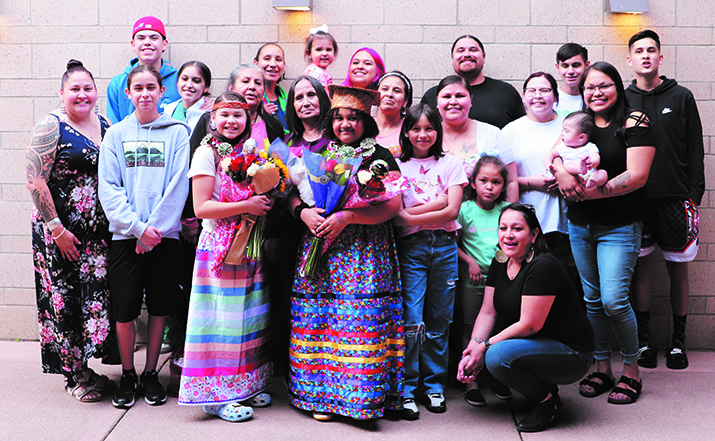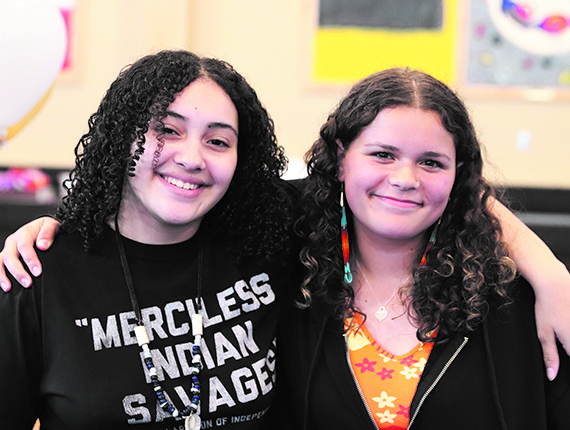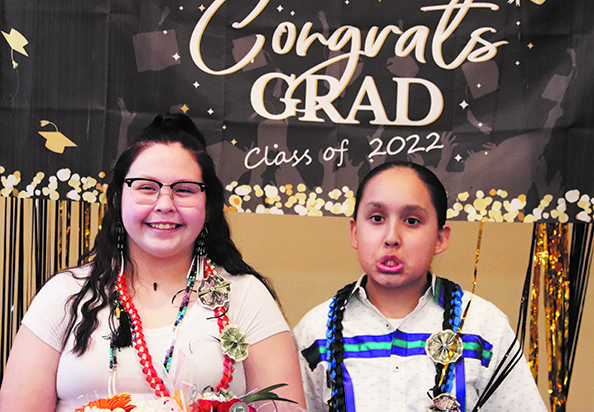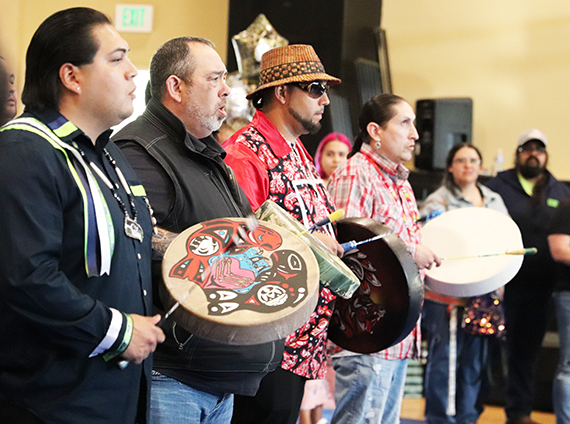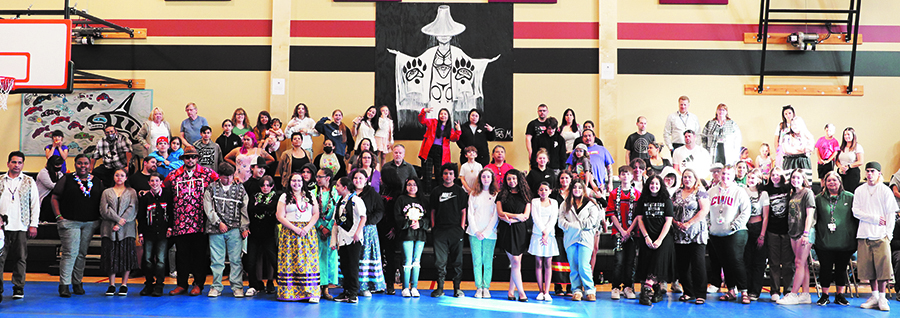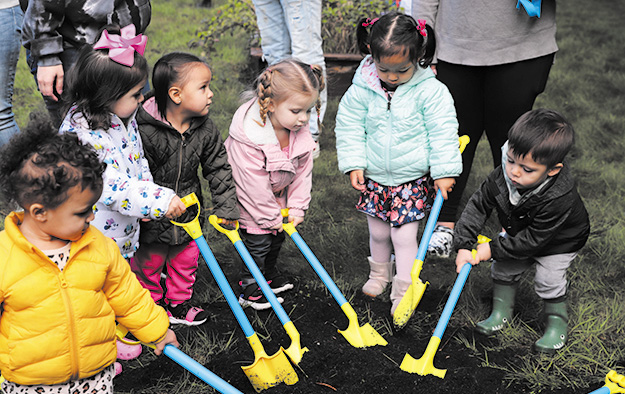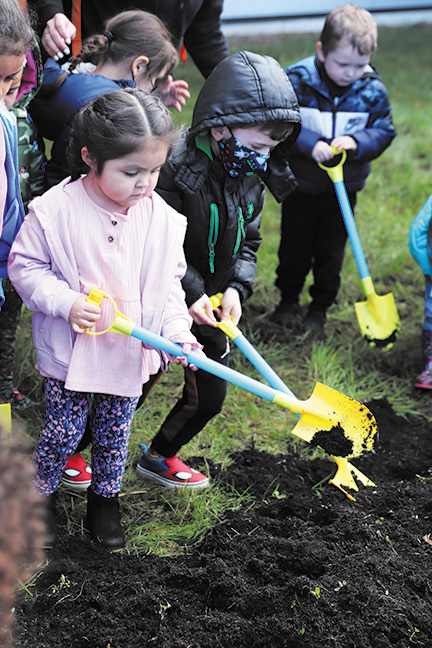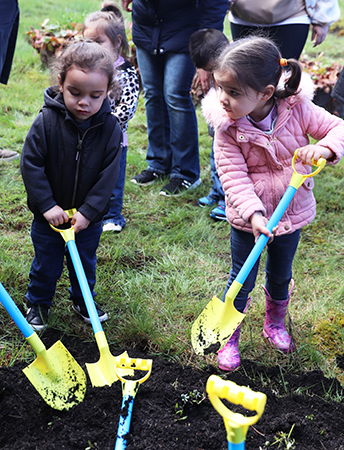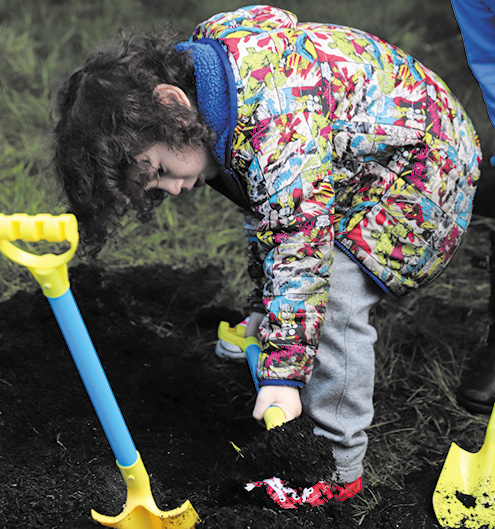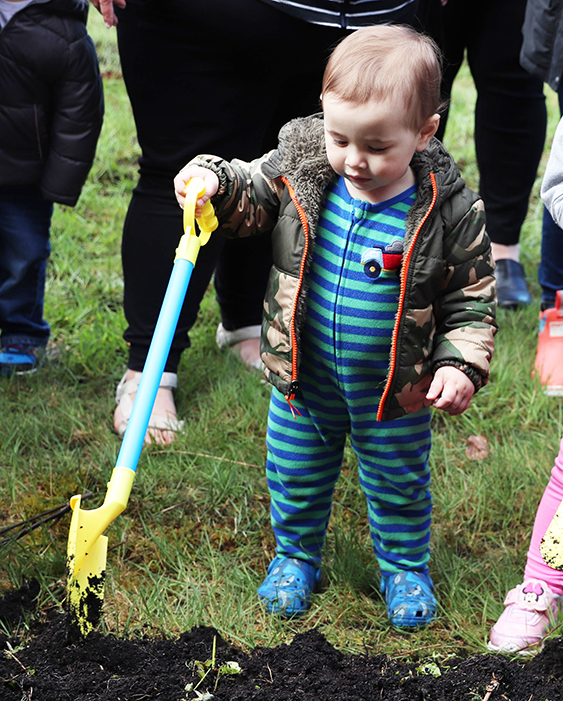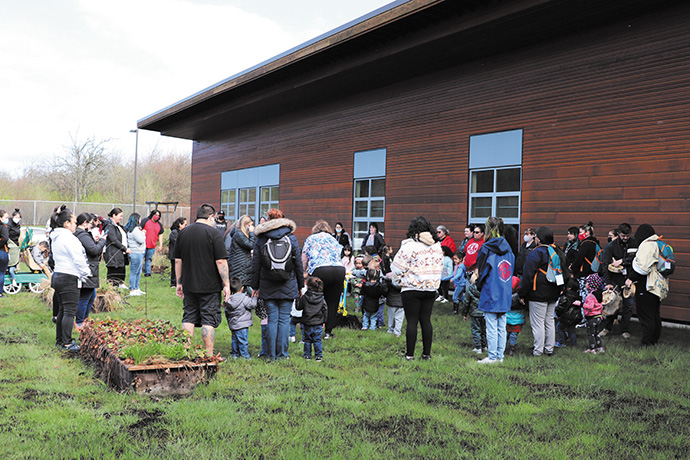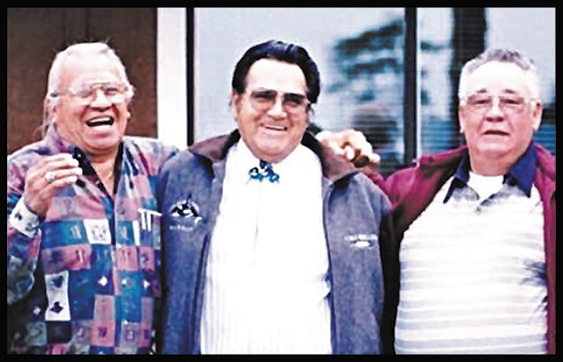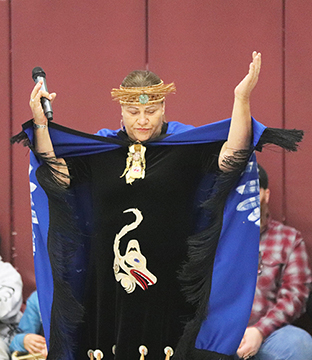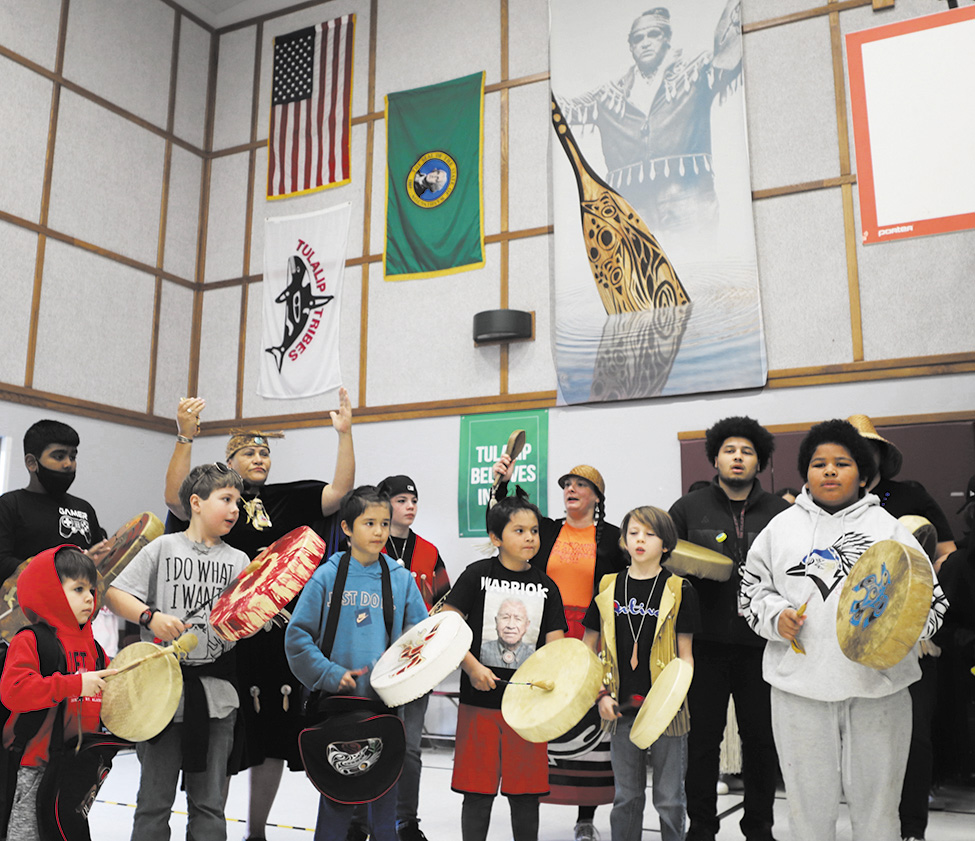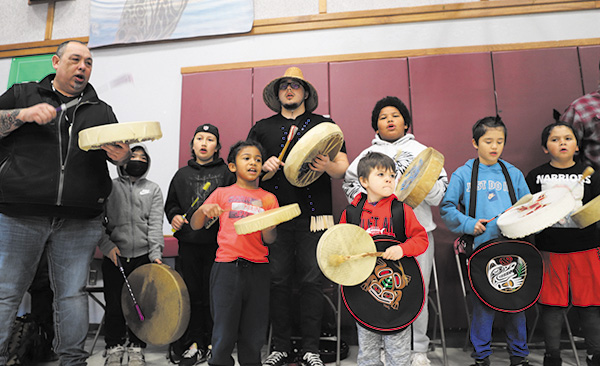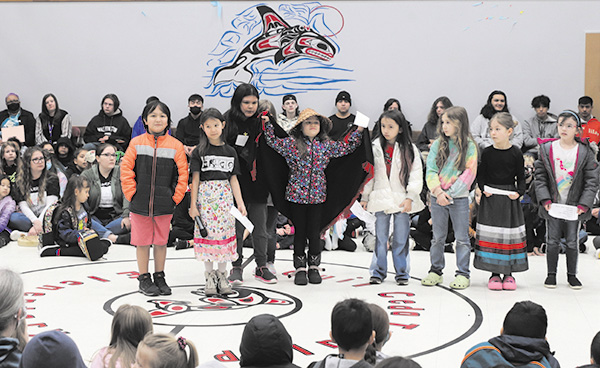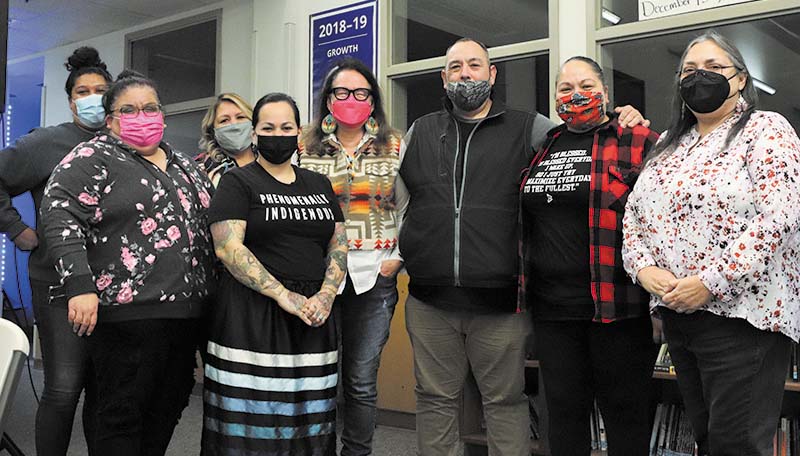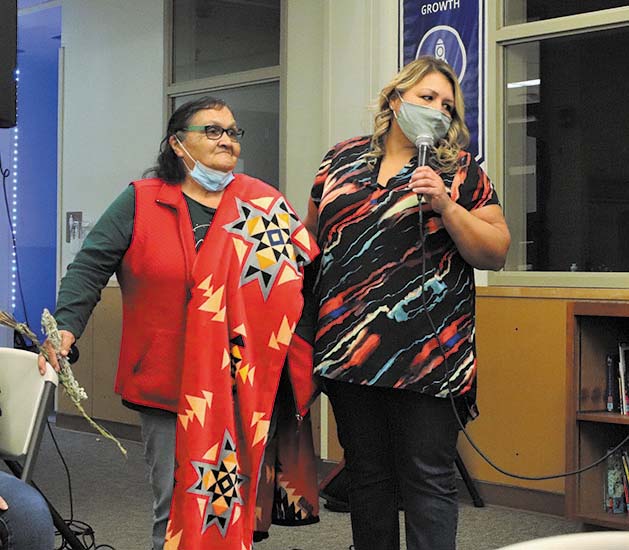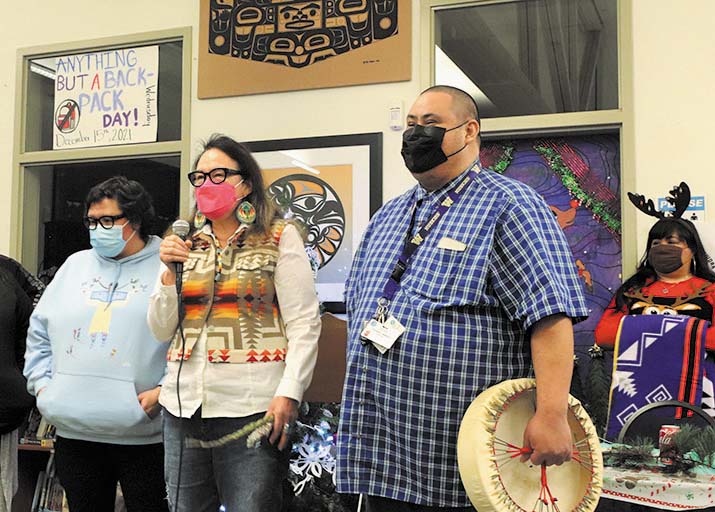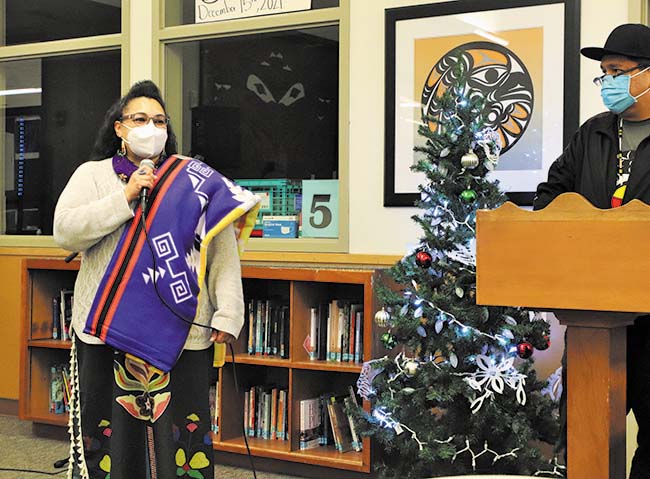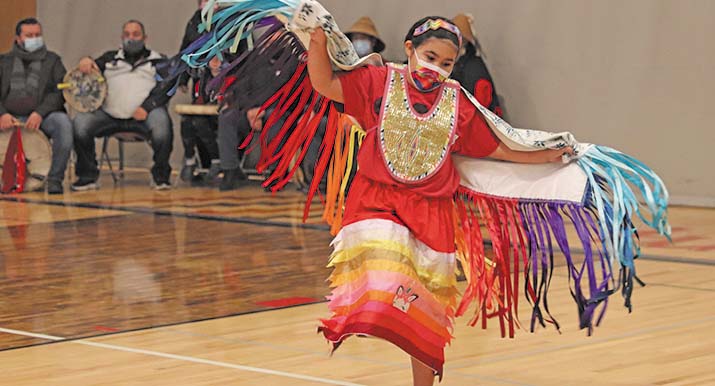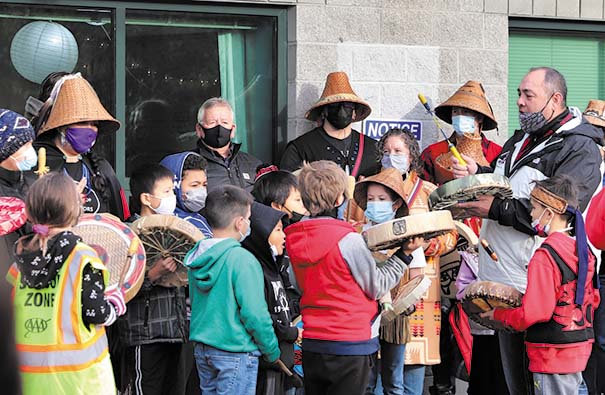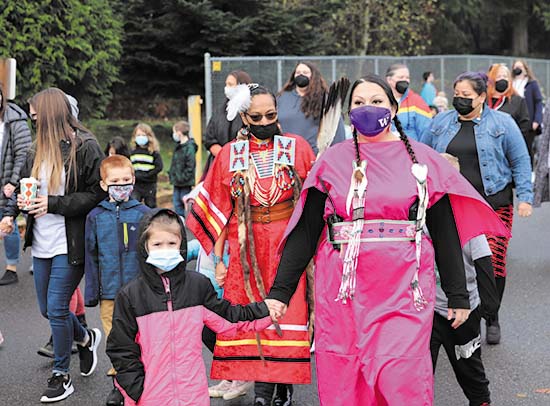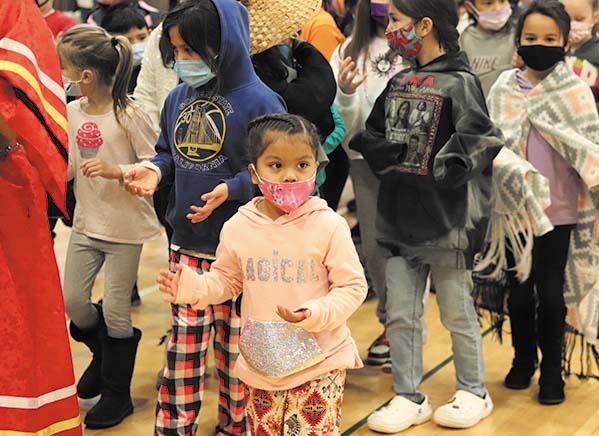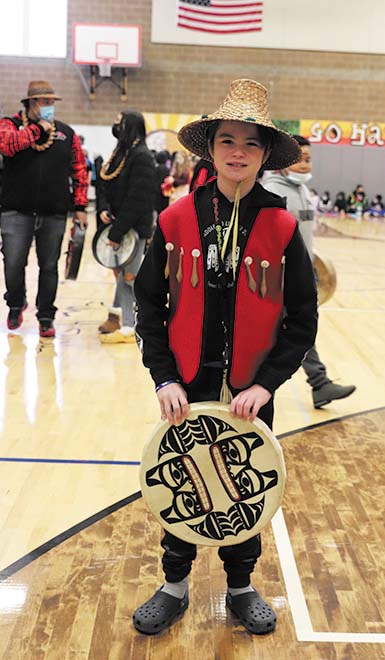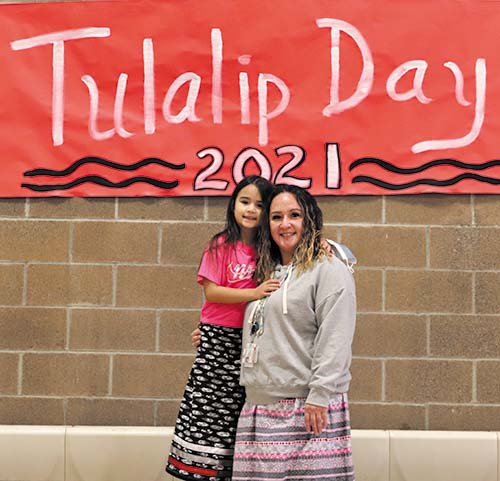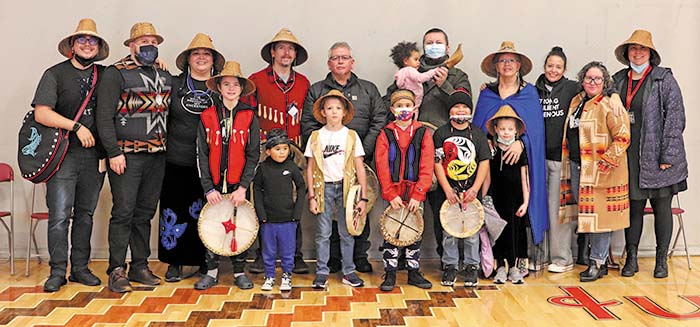
By Kalvin Valdillez, Tulalip News
A fire was ignited in the heart of downtown Minneapolis on the morning of July 8. Over one hundred Indigenous youth, hailing from tribal nations throughout the country, approached that fire adding their choice of sage, cedar, or tobacco, and guided its smoke over their bodies head-to-toe while saying a prayer.
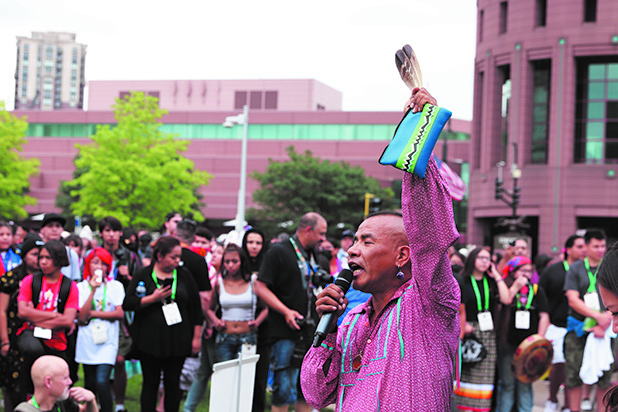
“We ask every one of you young people to stand in prayer. Vocalize a prayer. Join us in prayer,” said the UNITY Fire Keeper, Sleepy Eye LaFromboise (Sisseton Wahpeton Dakota). “We’re going to send out a spiritual energy here in Minneapolis. We’re going to unite today. Each and every one of you relatives, we’re going to ask you to pray for our water, to pray for our fire, for the air we breathe, for Mother Earth, to pray for our medicines – the plants, the animal kingdom. We come from a long line of people who knew the fire, the water, the earth. No matter who you are, where you come from, it’s in us. We’re asking you all to unite in prayer as we sing this song and start the fire. We’re going to keep this fire burning. We’re going to bring healing to our nations, to our communities, to the world.”
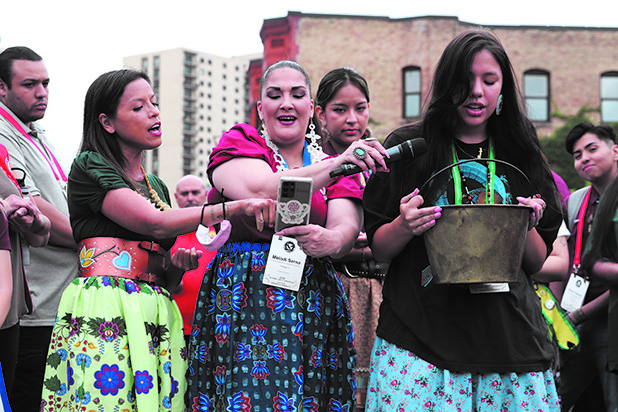
A group of Ojibwe women carefully brought out a basin of water and gathered near the fire. They carefully placed the basin on a drum bag and offered a song in their traditional Anishinaabemowin language.
“The song we’re going to sing is for the water ceremony,” explained Little Spruce (Cecilia Stevens). “There are so many different ways to honor and celebrate our water. As we’re singing that song, we’re petitioning to that water spirit and we’re praying for it. This water song comes from Doreen Day and her grandson. They would sing ‘water I love you, I thank you and I respect you.’ It’s honoring the directions but it’s also honoring the different realms we live on, the earth, the sky, the universe and what’s beyond there.”
The honoring of the elements ceremony officially kicked-off a five-day conference designed to uplift, inspire, and provide young Indigenous leaders with all the tools, support, and encouragement to be strong and impactful leaders of their respective tribes. The United National Indian Tribal Youth Conference, more popularly known as UNITY, is held every summer in different cities throughout the country and is open to tribal youth councils and Native youth who are between the ages of fourteen and twenty-four.
Amongst the crowd witnessing the water ceremony and the lighting of the UNITY fire, was Tulalip Youth Council’s Vice-President, Faith Valencia. After a day of travel and waking up early in a different time zone, Faith was glad that she attended the ceremony.

Faith stated, “That ceremony made me feel better. It was really cool hearing other Natives speak their languages. I witnessed a lot of young Native people listening and being respectful to the elders who had a lot to share and say.”
UNITY was originally established in the late 70’s and has played a big role in shaping young Indigenous leaders ever since. Traditionally, the UNITY Fire remains lit throughout the entire duration of the five-day conference and acts as a safe space where conference attendees can visit and offer prayers. However, due to Minneapolis laws and fire regulations, the UNITY Fire was to be extinguished following the opening ceremony.
Said Sleepy Eye, “We’re going to be using the water throughout the conference. We’re going to have the rooms near the convention center where we’re going to keep this bucket of water. We’re going to have teachings, songs, dances, and stories around the water. We’re going to carry a flame from this fire. We’re going to light a candle and we’re going to keep that candle burning throughout this entire conference. At the last day of the conference, we’re going to come back here and going to start the fire again. This is a whole new way that we have to do this, but our people are resilient. Our people always find a way to make things happen. We never turn our back to the water. We never turn our back to the fire.”
Although there was close to two hundred in attendance of the water and fire ceremony, that was nothing compared to how many were registered for the event. In total, there was close to 2,000 young Indigenous leaders who signed up for UNITY. At the first major gathering of the conference, the youth were asked to wear their traditional regalia and take part in a Grand Entry. Youth Council members entered the main auditorium of the Minneapolis Convention Center draped in shawls, jingle dresses, headdresses, cedar hats, and beaded jewelry. Some youth councils proudly carried their tribe’s flag as they circled the auditorium.
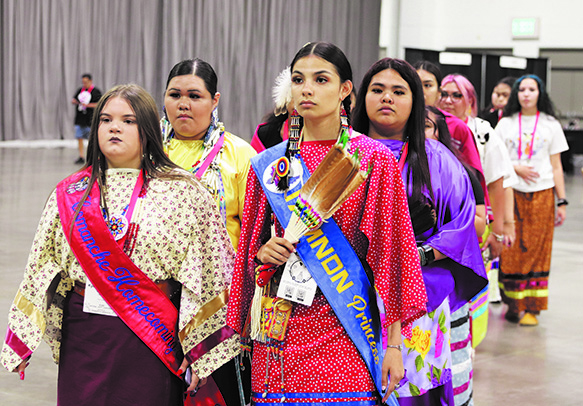
Following the grand entry, the youth took their seats and were welcomed by Minnesota Lt. Governor Peggy Flanagan (White Earth Band of Ojibwe). The U.S. Department of the Interior Secretary, Deb Haaland, recorded a special video massage which was received with thunderous applause and whistles from the youth. The first day of UNITY closed with the star-studded Indigenous Actors in Film Panel which featured Kiowa Gordon (Hualapai) of the Dark Wind TV Series, Stormee Lee Kipp (Shoshone-Bannock and Blackfeet) of the upcoming Predator movie Prey, and Mato Wayuhi (Oglala Lakota) composer of the TV series Reservation Dogs.
Chance Rush (Hidatsa), a longtime motivational speaker in Indian Country, was one of the main emcees of the conference and dropped many jewels for the youth throughout the week. “I know a lot of you hear that you are future leaders. You are not future leaders; you are our leaders of today. You’re our leaders right now. There are people who are having a great time. There are individuals here who are striving to put themselves on another level. There are individuals here who are trying to figure out their purpose. There are some individuals here who are struggling, and this is their hope. They came to Minneapolis to sit amongst 1700+ relatives.”
The next morning, the youth arrived at the auditorium wearing their ribbon skirts and shirts. Before the morning’s general session began, the youth were invited on-stage to walk the runway in true model fashion. Many young leaders relished the spotlight and took the opportunity to strike a pose for our camera.
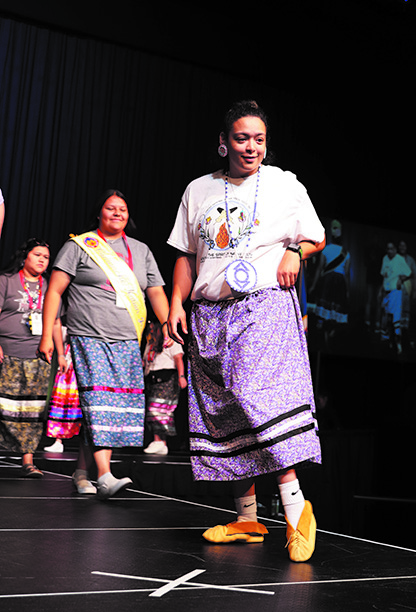
Arawyn Dillon of the Yakama Nation expressed, “That was really beautiful. It was amazing to see everyone’s ribbon skirts and shirts and all the different styles. This is new for me and it’s beautiful that we’re all gathered here in this space and we’re not the minority for once. Seeing everybody here makes my heart happy. These are my people, and this is truly an amazing experience.”
The keynote speaker on the second day of UNITY was none other than Chef Pyet DeSpain (Prairie Band Potawatomi Indian Nation), who was the first winner of the national TV Series, Next Level Chef. She shared her journey of becoming a chef with the youth as well as some great advice on finding your path in life.
Said Chef Pyet, “Remember that it’s okay to be your true authentic self. It’s okay to show the world you’re brown and proud. It’s okay to take a risk, even if it might look scary, you never know where it leads you. Most importantly, it’s so crucial that you don’t forget your roots and you don’t forget your whys at the end of the day. Every day from this point forward, when you wake up, I want to challenge you to ask yourself ‘who do I want to be?’ Not just in the future, but who do I want to be today. Do you want to be the best daughter, the best brother or sister, do you want to be the best version of yourself? Really think about it because that’s what’s called setting an intention. When you start showing up as your best self every single day, and you’re brown and proud, things will start falling in to place for you.”
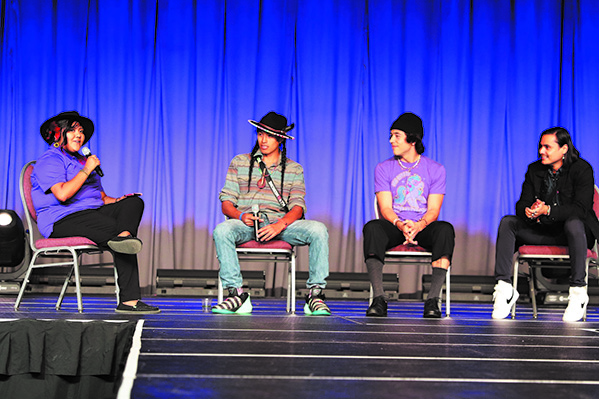
Every year, UNITY hosts a three-on-three basketball tournament during the conference. This year’s tournament was held at a local high school gym. The tournament’s sign-up sheet filled up quickly and over thirty teams competed for the title of UNITY champs.
It was all smiles, even after an early round knockout, for young Korban Bennett. “We played against the bear team, and they did pretty good,” he shared. “We end up losing to them, but it was still a lot of fun. Traveling from California to Minnesota to be among my people, and playing basketball with them on top of that, is just so awesome!”
The second day of UNITY was jampacked with fun and it did not end with the three-on-three basketball tournament. After a dinner intermission, the large group of young Native leaders reconvened at the main auditorium once more for the UNITY talent show. Over twenty young adults showed-off their creative side on stage and delivered an entertaining evening for their peers. The crowd cheered loud for the talented acts and even danced and sang along to a couple of numbers. There were many singers, who sang everything from traditional songs to modern country, pop, R&B and hip-hop. There was also a guitarist who shredded, a comedian who told some great dad jokes, poets who shared their powerful messages, a speed painter who brought awareness to the MMIWP movement through her art, a boxer who showed off her jabs and uppercuts, and a traditional dancer who moved about the stage in full regalia.
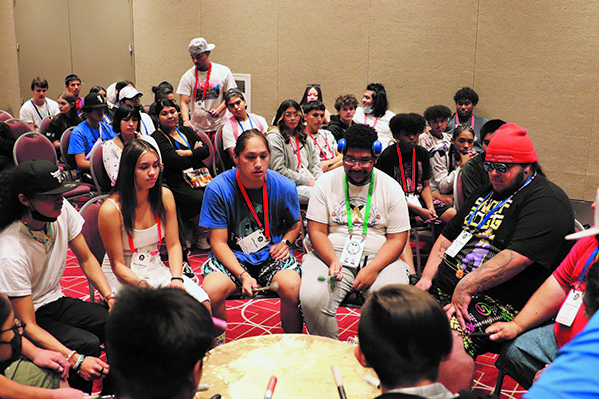
The showstopper of the evening was a young singer from the Spokane Tribe of Indians named Isaac Tonasket. Isaac, who lives a completely sober lifestyle, sang the popular country hit Tennessee Whiskey by Chris Stapleton. He captivated the spectators with his vocals, and immediately people left their seats to rush the stage and share a slow dance while Isaac brought down the house.
“I told my auntie that by the end of this conference everyone was going to know my name,” Isaac exclaimed. “That was such a cool experience because I’ve only sang in front of a decent crowd twice. That talent show, though, as soon as that beat dropped, everyone went crazy. Then I started singing, and they all went crazy again and everyone started dancing. That makes me feel good, like I’m doing my job, I’m making these people happy and that’s what I love doing.”
He continued, “It feels so good coming out here and seeing all the kids willing to learn and make a change for their ways and all our people. I really want to promote staying sober. Most kids, especially out on the rez, start drinking and smoking at a super-duper young age. When I tell people that I never drank and don’t do drugs, people are always so impressed. That’s one big thing that I really want to promote because drugs and alcohol has such an impact on our Native communities.”
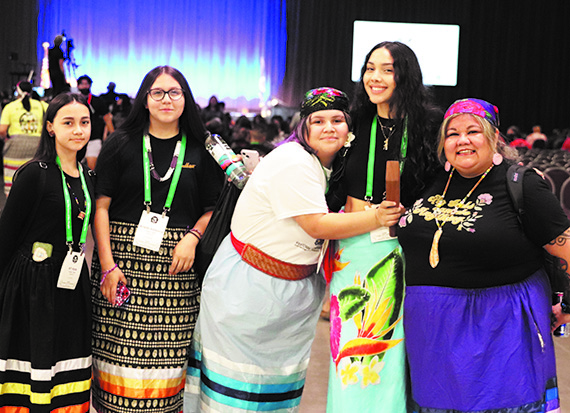
UNITY held their first day of workshops on the third day of the conference. The youth received the opportunity to engage and learn in classes such as Plants: Our Sacred Medicine, Poetry Changes the World, Runaway Toolkit and Must-Knows, Bringing Language and Culture into Our Youth Council, Food as Medicine, Native American Storytelling through Performance, Talking Circle: Centering 2-Spirit & LGBTQ+ Identity and Experiences, Drum Beats and many others.
After the first-round of workshop sessions, the National UNITY Council Business Meeting was held. All the youth council reps from each region met to give reports about the work their youth council has done in their respective homelands over the past year, as well as vote on the new UNITY Executive Committee Members. Jonathon J. Arakawa (Elwha) was re-elected as the UNITY NW Region Rep. The third day of UNITY ended with a Gala night. The young adults were dressed to the nines for an evening of entertainment, a delicious multi-course meal, and dancing.
More workshops were scheduled for day four of UNITY, but before the kids dispersed to the conference rooms, a Native Activism Then and Now panel was held on the main stage. Seated next to each other were three iconic and powerful Indigenous matriarchs – Winona LaDuke (Ojibwe), Madonna ThunderHawk (Oohenumpa Band of the Cheyenne River Sioux Tribe), and Judith LeBlanc (Caddo Tribe of Oklahoma) who all shared their stories and a bit of their wisdom with the youth. After an insightful and riveting conversation, the Tulalip Youth Council gathered at the side of the stage to offer the Honor Song to the ladies before they exited the stage.
That moment was the first time that many tribal youth witnessed the traditions of a Coast Salish tribe, which set the stage and built some excitement for later that evening during UNITY Culture Night.
Fashioned once more in their traditional attire, about thirty tribal youth councils showcased their songs, dances, stories, histories, and games during culture night. The cultural exchange provided the opportunity for young Natives from other nations to experience the teachings and traditions that are upheld on different reservations. Many dances that were shared during culture night were social dances and everybody in the crowd was invited to join in. Tulalip was among those who participated in culture night. offering two songs. NW Region Rep, Jonathan joined Tulalip during their time slot. The crowd was fully engaged and whooped-it-up when the Tulalip youth dancers hit the floor.
On the fifth day of the conference, James Anderson (Lac Courte Oreilles Band of Ojibwe) held the honor as the last keynote speaker of UNITY ‘22. He reminded the young leaders to always bring high energy to everything they do each and every day. Juanita “Moonstar” Toledo (Pueblo of Jemez) closed the conference with a powerful and lyrical performance and had the youth out of their seats and waving their hands in the air. The UNITY Fire was lit once again, and people bid their farewells after saying their prayers and offering their cedar, sage, or tobacco to the fire. Filled with optimism and inspired to create change on their reservations, the Indigenous youth parted ways with promises of meeting next summer at the 2023 UNITY Conference in Washington D.C.
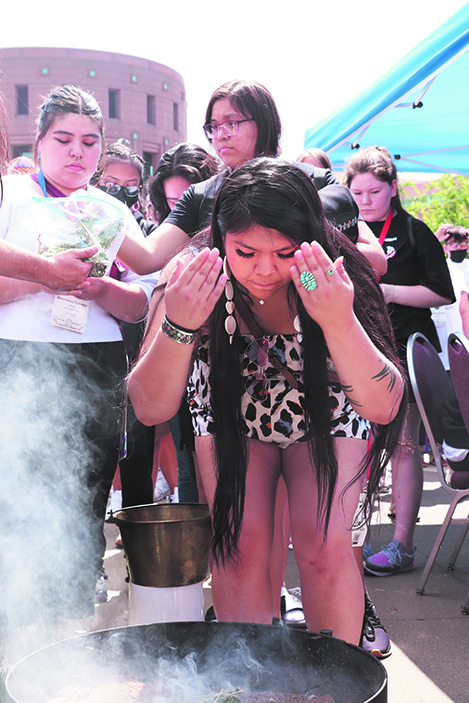
“It felt heartwarming seeing everyone gathering in a place where we all felt comfortable with each other, knowing that we all struggle with the same things,” said Tulalip Youth Council member, Arielle Valencia. “We all went through genocide. I felt comfortable being around people who understand me. Just knowing that everyone here will be there for you, it felt good. It was awesome.”
In the next couple issues of the syəcəb, Tulalip News will continue providing stories from the UNITY Conference including a conference recap with the Tulalip Youth Council. Also, Tulalip’s very own social media influencer, Faith Iukes, attended UNITY this year and worked behind the scenes to create social media content for both her channels and UNITY’s official pages. Stay tuned as we catch up with Faith and talk about her experience at UNITY.
